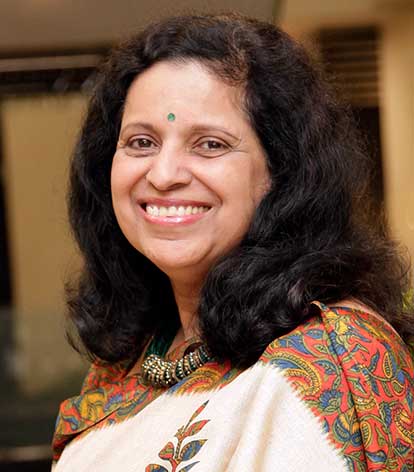ARC Advisory Group’s Craig Resnick hosted an interesting podcast on the significance of value chain optimization with Elias Panasuik, Senior Global Program Director, EcoStruxure Power and Process, Schneider Electric and Yong Thé, Global Sales Lead, AVEVA Unified Operations Center.
Both guests are involved with providing value chain optimization solutions for their customers’ operation centers designed to help combine multiple disparate control systems into integrated operations centers (IOC), which helps them to evolve into unified operations centers (UOC).
All participants were of the opinion that value chain optimization is not a fixed destination, it is a continuous journey of learning and improvement. This blog captures the highlights of the podcast. You can listen to it here and at Value Chain Optimization Podcast.
https://podcasts.apple.com/us/podcast/addressing-the-significance-for-value-chain-optimization/id1500952204?i=1000583833006
Case Studies
Elias of Schneider Electric cited the example of a customer in the minerals and metals space. The challenge was to balance the supply chain between their production (mining raw materials) and finishing facilities. Dynamic visibility of disruptive events and opportunities that would impact the production schedule was needed. Disparate groups and systems had to be brought together in a consistent manner. But the baseline was to get the systems in one consistent place, and then look at both the production and energy balance between various sites.
Yong of AVEVA spoke about ADNOC, an oil company in Abu Dhabi where they have interests across the entire value chain from the upstream production to the supply to customers. However, they don’t always manage the entire value chain; the businesses downstream or upstream operations could be separate entities altogether. The entire value chain across multiple businesses needs to be optimized; but control is not possible as there are no operational rights. ADNOC has done this through enterprise visualization (monitoring and advising) of the entire value chain. The benefits in terms of time and money are phenomenal.
Organizational Culture for Success
To integrate or have a means of controlling the entire value chain requires a higher level of collaboration; and that collaborative platform has to be built into the actual solution, explained Yong. As it involves an integration of business processes and digitalization there has to be training and cultural shifts to align to the new requirements. This change has to percolate from the top where the executives view the entire value chain and make decisions to implement new technologies. Elias added that to realize the return on investment there has to be a cultural alignment with change. There must be a common vision and a common toolset, although the application may differ. Different disciplines within an organization would use the tools a little bit differently, but the platform is the same.
Overcoming Resistance to Change
Craig said that people are usually risk-averse and hesitant to move away from established practices. “How do you make them more proactive and become leaders?” he asked. Yong said that when the entire value chain can be seen, the kinks and inefficiencies become clear and people understand the benefits of collaboration and integration. Sometimes the business landscape and government mandates, such as the recent ESG initiatives, make such changes necessary. Elias added that the buy- in from top leadership to change, which includes the renewed focus on KPIs such as ESG, links what’s happening at a boardroom level with the shop floor. Hence collaboration becomes much more straightforward than a traditional OT/IT architecture. The objective is to keep operations consistent, resilient, and safe.
Leveraging the Digital Thread
People are beginning to see the effects of how value chain optimization technologies, such as the digital thread, are impacting organizations, and then, ways of being able to codify, measure, and see how these technologies can provide tangible benefits. Elias said that even within the same industry there are different business drivers, adoption and maturity curves, and organizational goals. Complexity can lead to challenges or opportunities. If opportunities are not realized quickly it can result in business losses.
According to Yong, the pandemic, geopolitical upheavals, and supply chain bottlenecks require companies to achieve higher levels of agility and operational resilience. It is like insurance that goes beyond ROI. Craig added that in the past it was primarily about efficiency and ROI, but today it is about investments in sustainability, operational resilience, and supply chain flexibility that includes solutions for minimizing consumption of WAGES (water, air, gas, electricity, and steam), which is a key part of value chain optimization.
Elias and Yong spoke about the rising customer demand for a simulation environment, a digital twin to create “what if” scenarios. Renewable energy sources have yet to reach a level of maturity, so there has to be a balance. Fossil fuels can be burned as and when required but the availability of sunshine and wind varies. To utilize and optimize different sources of energy, there has to be adequate storage and simulation to view and monitor the process. This energy transition is adding a whole new dimension to businesses. Through simulation, the problem can be understood both from the operational and design perspectives, which contributes to value chain optimization.
Concerns about Cybersecurity
Regarding value chain optimization, cybersecurity is “top of mind,” said Elias and there is a need for cybersecurity architecture right from the start. From the planning stage companies must ensure that the right tools, people, and processes are in place and the risk aspect is managed as efficiently as possible. Data federation policies and appropriate audit systems must be in place to ensure security. Yong said that before implementing a solution, the priorities, user base, and extent of support should be clear.
Editor’s note: This blog was originally published by ARC Advisory Group on November 2.
AUTHOR BIO
 Sharada Prahladrao is the editor and public relations manager at ARC India. She edits ARC’s Global Market Outlook studies and co-authors ARC Strategy Reports and Insights. She has the innate ability to understand complex concepts and express them lucidly.
Sharada Prahladrao is the editor and public relations manager at ARC India. She edits ARC’s Global Market Outlook studies and co-authors ARC Strategy Reports and Insights. She has the innate ability to understand complex concepts and express them lucidly.
